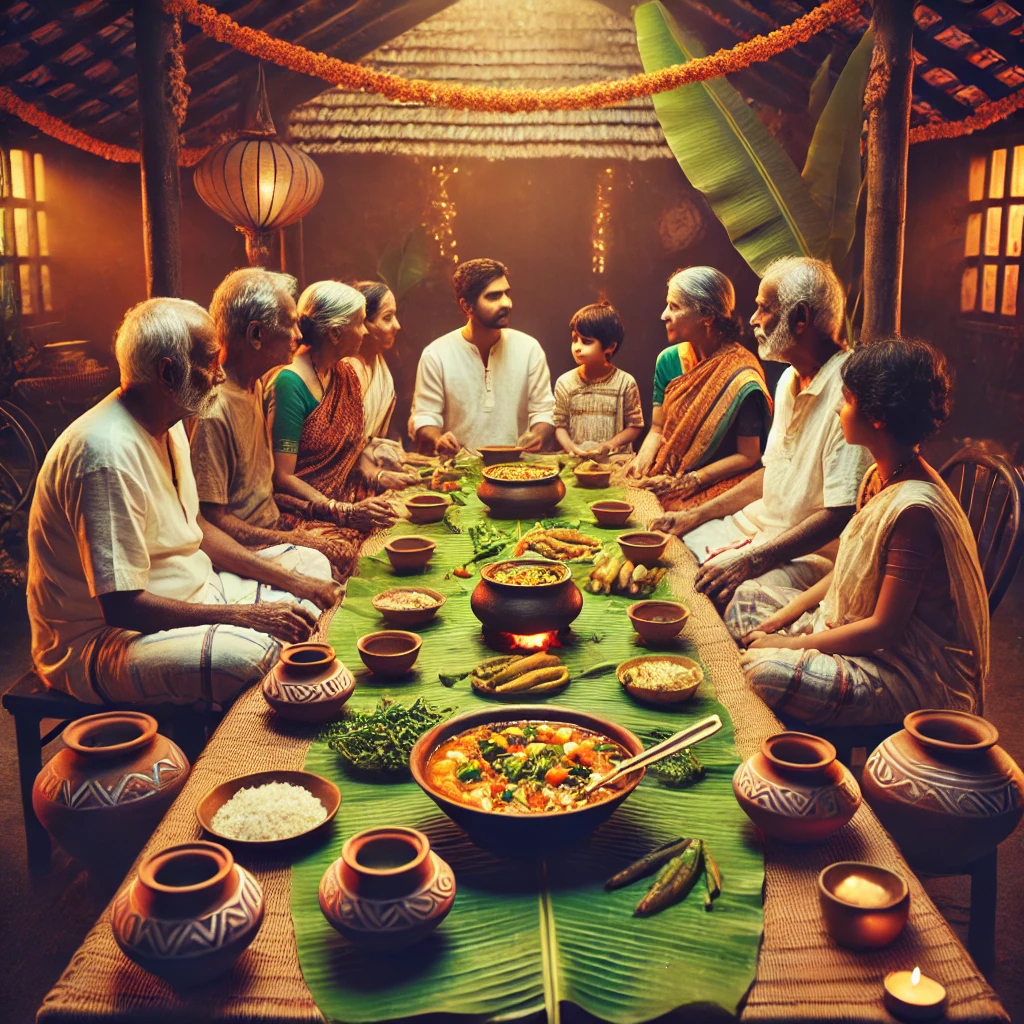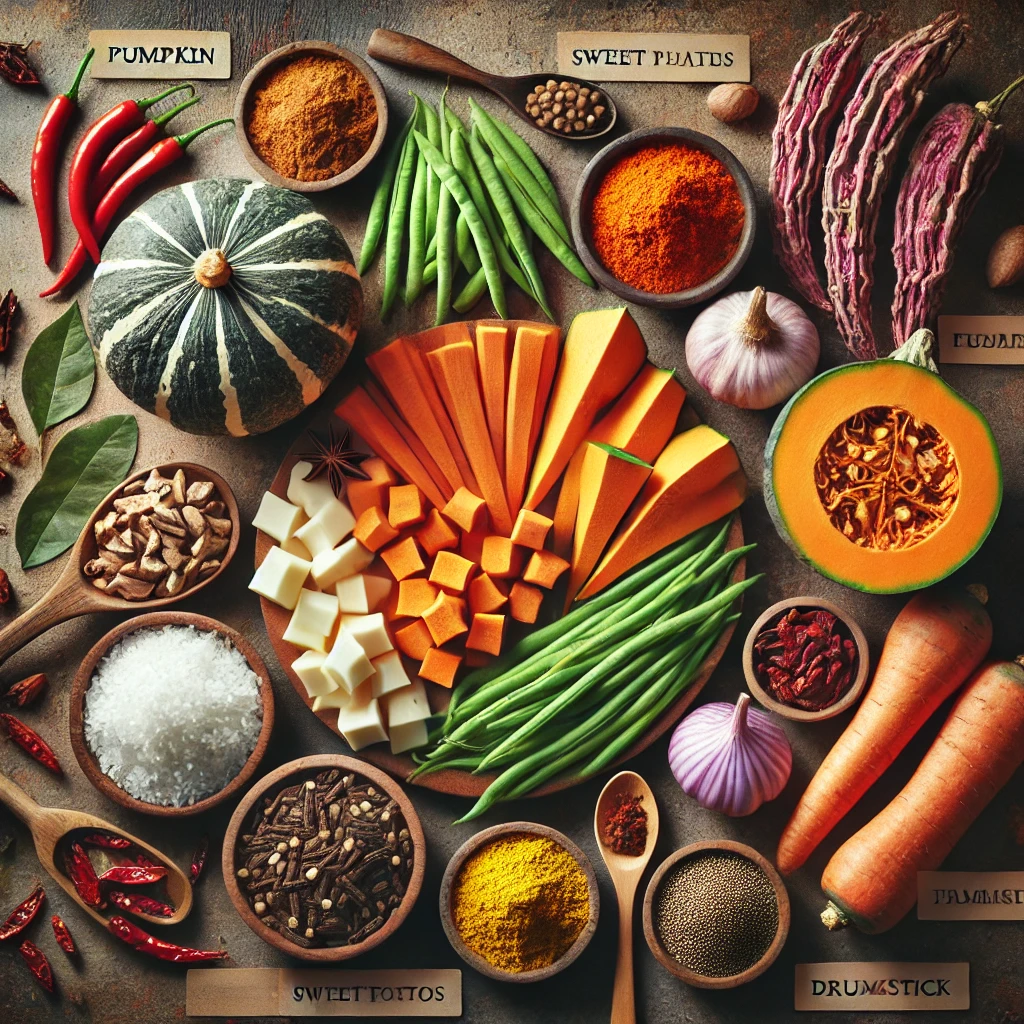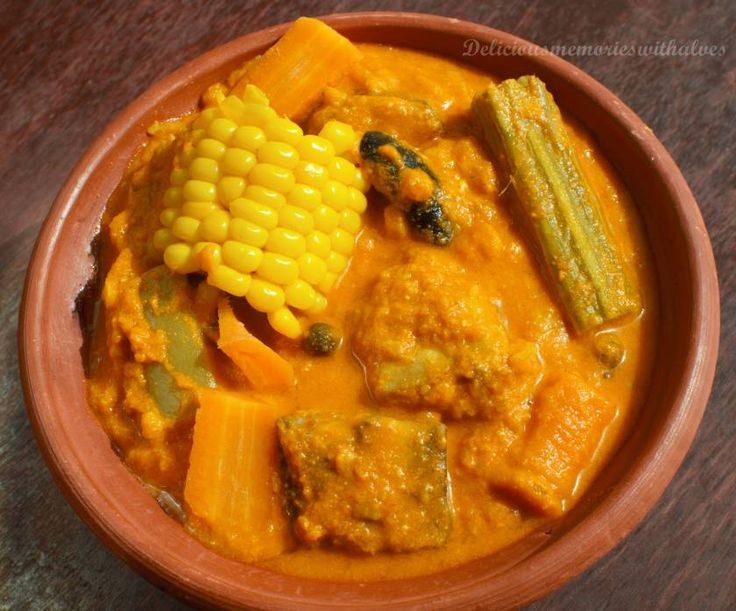Khatkhate is a traditional Goan vegetable stew often prepared during festivals, religious occasions, and special family gatherings. It’s a beloved dish among the Goan Saraswat Brahmin community and is entirely vegetarian, typically made without onion or garlic to suit religious observances.The stew is made with a mix of seasonal vegetables like pumpkin, sweet potatoes, carrots, green beans, and drumsticks, cooked in a coconut-based gravy flavored with a unique spice blend called tephal (Sichuan pepper). The dish has a distinctive tangy and mildly spicy taste, often enhanced by the addition of tamarind and red chilies.Khatkhate symbolizes abundance and the celebration of harvest, making it a dish deeply tied to Goan culture and tradition.

History
Khatkhate has a deep-rooted history in the Goan Saraswat Brahmin community. This dish is believed to have originated centuries ago when the Saraswat Brahmins migrated to the coastal Konkan region, including Goa. The name “Khatkhate” is derived from the Konkani word “khatkhato,” which means a mixture of various ingredients.Traditionally, Khatkhate is associated with religious and festive occasions, especially during festivals like Ganesh Chaturthi and other family celebrations. As a vegetarian dish, it aligns with the dietary practices of the Saraswat Brahmins, particularly during auspicious days when avoiding onion and garlic is customary.The use of tephal (Sichuan pepper) is unique to this dish and is believed to have been incorporated due to the community’s close connection to the Western Ghats, where this spice grows. The blend of vegetables, coconut, and tamarind also reflects the region’s agricultural abundance, making Khatkhate a true representation of Goan cultural heritage.Even today, the dish is cherished for its symbolic value, signifying unity, prosperity, and gratitude for nature’s bounty. It remains a testament to Goa’s culinary diversity and the preservation of traditional cooking practices.

Taste Description
Khatkhate offers a unique and balanced blend of flavors that reflect the essence of Goan vegetarian cuisine. The taste is a harmonious combination of:
Spiciness: The dish has a gentle, warming spiciness from dried red chilies and peppercorns. It’s not overly hot but has a pleasant heat that enhances the overall flavor.
Tanginess: The addition of tamarind gives it a subtle, tangy kick that balances the richness of the coconut. This tanginess is a defining characteristic of many Goan dishes.
Earthiness: The variety of root vegetables like sweet potatoes, pumpkin, and carrots add a natural sweetness and earthy depth to the stew.
Aromatic and Nutty: The grated coconut and tephal (Sichuan pepper) create a nutty, aromatic quality that is distinctly Goan. The tephal also lends a slightly citrusy, peppery aroma.
The overall experience of Khatkhate is hearty, comforting, and satisfying. It’s a dish that feels rustic yet complex, making it a memorable part of Goan festive cuisine.

Ingredients:
1 cup pumpkin, diced
1 cup sweet potatoes, diced
1 cup carrots, sliced
1 cup green beans, cut
1-2 drumsticks (vegetable), cut into pieces
1/2 cup grated fresh coconut
2-3 dried red chilies
1 tsp Sichuan pepper (tephal)
1 tbsp tamarind pulp
1 tsp black peppercorns
1 tsp cumin seeds
1/2 tsp turmeric powder
Salt to taste
Water, as needed
Instructions:
1. Prepare the Vegetables: Wash and chop all the vegetables into medium-sized pieces.
2. Cook Vegetables: In a large pot, add the vegetables with enough water to cover them. Add turmeric and salt. Cook until the vegetables are tender but not mushy.
3. Grind the Masala: In a blender, grind grated coconut, dried red chilies, black peppercorns, and cumin seeds with a little water to form a smooth paste.
4. Add the Masala: Add the ground masala paste to the cooked vegetables. Stir well and let it simmer for 5-7 minutes.
5. Add Tamarind and Sichuan Pepper: Add tamarind pulp and Sichuan pepper (tephal) to the pot. Adjust salt and consistency by adding water if needed. Let it simmer for another 5 minutes.
6. Serve: Remove from heat and serve hot with steamed rice or as part of a festive meal.

Nutritional Value
Khatkhate is a nutritious and wholesome dish with a well-rounded blend of carbohydrates, proteins, and healthy fats. A serving of about one cup provides approximately 150-180 calories, primarily from the variety of vegetables like pumpkin, sweet potatoes, and carrots. It contains around 25-30 grams of carbohydrates, contributing to its energy content, while the fiber content of about 6-8 grams supports digestion. The dish is low in fat, about 4-6 grams, mainly derived from the grated coconut, which also adds a hint of healthy fats. The protein content is moderate, about 3-4 grams, making it a light yet filling option.Khatkhate is rich in essential vitamins and minerals. It offers a substantial amount of vitamin A (about 150% of the daily value), thanks to the vibrant vegetables, and about 20% of vitamin C, enhancing its antioxidant value. It also contains potassium, crucial for heart health, and a moderate amount of iron. With its low sodium content and balanced nutrient profile, Khatkhate is a comforting, heart-healthy dish that brings a taste of traditional Goan culture while offering several health benefits.
Health Benefits:
Rich in fiber: Supports digestion and gut health.
Low in fat: Good for heart health.
Antioxidant-rich: Due to ingredients like pumpkin, sweet potatoes, and tamarind.
Vitamins and minerals: Provides essential vitamins A and C, potassium, and iron.
The nutritional value can vary slightly depending on the ingredients used and portion sizes.
Personal Experience
As a Goan, Khatkhate isn’t just a dish — it’s a piece of our heritage, a reminder of family gatherings and festive celebrations. Growing up, Khatkhate was a must-have during festivals like Ganesh Chaturthi. I remember the aromatic, earthy scent filling the house as my grandmother skillfully stirred the bubbling pot on the firewood stove. Each vegetable was carefully selected, cut, and added with love. The slight tang of tamarind mixed with the warmth of red chilies and the nutty richness of grated coconut made every spoonful comforting.
Eating Khatkhate always felt like a celebration — the whole family gathered around, sharing stories and laughter. We paired it with steamed rice or sometimes just enjoyed it as a warm, hearty bowl. Even now, whenever I taste Khatkhate, it takes me back to those days — a nostalgic blend of flavors that carry more than just taste but the essence of our Goan roots.

